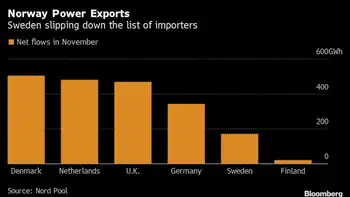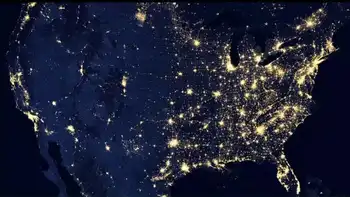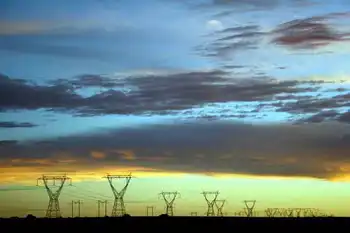U.S. Demand Response Now Considered Critical
ATLANTA, GA -- - A select group of senior executives and government officials representing the energy sector gathered today in Washington D.C. at a U.S. Department of Energy conference to consider the future of the national electrical system.
For perhaps the first time, demand response was formally included with equal status alongside the issues of generation, transmission, and distribution resources. Apogee Interactive's CEO, Joel Gilbert, was asked to present the overall strategic role of demand response and to participate in the brainstorming sessions that followed. "Consumer demand response (where customers reduce electric demand during times of high market prices and/or system reliability events) represents a diverse and robust resource and can be a vital element in the operational security and cost management of our energy infrastructure," said Gilbert. He urged participants at the DOE National Electric System Vision Conference to factor this potentially environmentally friendly resource into the nation's blueprint of policies, programs and technologies needed to improve the country's aging electrical system. The conference marked the first step in the DOE's national effort to strengthen America's electric delivery system, as directed by President George W. Bush. Under Secretary of Energy Robert Card tasked the attendees to identify priorities for a national vision for the U.S. transmission system. Results from this 1 1/2-day session will set forth the guiding principles for additional brainstorming sessions slated for this summer to develop a roadmap of technology solutions for the nation's transmission infrastructure. Gilbert emphasized that while demand response can be a lower cost and operationally superior resource than supply side options (because demand response is "already delivered"), the boom-bust economic valuation cycles for energy markets work against energy companies trying to offer stable, long-term demand response programs. These cycles also dissuade customers from participating in such programs. Gilbert introduced a "regional demand response reserve bank" model that would use a longer-term risk pooling mechanism to stabilize valuations and aggregate significant demand response, enabling it to be actively traded against supply side alternatives. "The demand response reserve bank facilitates the creation of a large resource that system planners can deploy much like they access other power supply resources," Gilbert said. Similar in concept to capital markets which use asset tagging to securitize loans, this reserve bank would purchase a portfolio of proven demand response in return for combination fixed plus pay-for-performance rewards to participating customers, Gilbert explained. These proven blocks of aggregated long-term demand response enable the underwriter to structure liquid market-facing agreements. Gilbert also cited the successful trading experience of THE DEMAND EXCHANGE(R) Trading Platform, the largest Internet aggregation of voluntary demand response in the US and New Zealand, representing 2,000 megawatts of resource and about 2,000 commercial and industrial customers.
"Consumer demand response (where customers reduce electric demand during times of high market prices and/or system reliability events) represents a diverse and robust resource and can be a vital element in the operational security and cost management of our energy infrastructure," said Gilbert. He urged participants at the DOE National Electric System Vision Conference to factor this potentially environmentally friendly resource into the nation's blueprint of policies, programs and technologies needed to improve the country's aging electrical system.
The conference marked the first step in the DOE's national effort to strengthen America's electric delivery system, as directed by President George W. Bush. Under Secretary of Energy Robert Card tasked the attendees to identify priorities for a national vision for the U.S. transmission system. Results from this 1 1/2-day session will set forth the guiding principles for additional brainstorming sessions slated for this summer to develop a roadmap of technology solutions for the nation's transmission infrastructure.
Gilbert emphasized that while demand response can be a lower cost and operationally superior resource than supply side options (because demand response is "already delivered"), the boom-bust economic valuation cycles for energy markets work against energy companies trying to offer stable, long-term demand response programs. These cycles also dissuade customers from participating in such programs.
Gilbert introduced a "regional demand response reserve bank" model that would use a longer-term risk pooling mechanism to stabilize valuations and aggregate significant demand response, enabling it to be actively traded against supply side alternatives. "The demand response reserve bank facilitates the creation of a large resource that system planners can deploy much like they access other power supply resources," Gilbert said.
Similar in concept to capital markets which use asset tagging to securitize loans, this reserve bank would purchase a portfolio of proven demand response in return for combination fixed plus pay-for-performance rewards to participating customers, Gilbert explained. These proven blocks of aggregated long-term demand response enable the underwriter to structure liquid market-facing agreements.
Gilbert also cited the successful trading experience of THE DEMAND EXCHANGE(R) Trading Platform, the largest Internet aggregation of voluntary demand response in the US and New Zealand, representing 2,000 megawatts of resource and about 2,000 commercial and industrial customers.
Related News

Blackout-Prone California Is Exporting Its Energy Policies To Western States, Electricity Will Become More Costly And Unreliable
SAN FRANCISCO - California is again facing widespread blackouts. Politicians are scrambling to assign blame to Pacific Gas & Electric (PG&E) a heavily regulated utility that can only do what the politically appointed regulators say it can do. In recent years this has meant building a bunch of solar and wind projects, while decommissioning reliable sources of power and scrimping on power line maintenance and upgrades.
The blackouts are connected with the legal liability from old and improperly maintained power lines being blamed for sparking fires—in hopes that deenergizing the grid during high winds reduces the likelihood of fires.
How…




